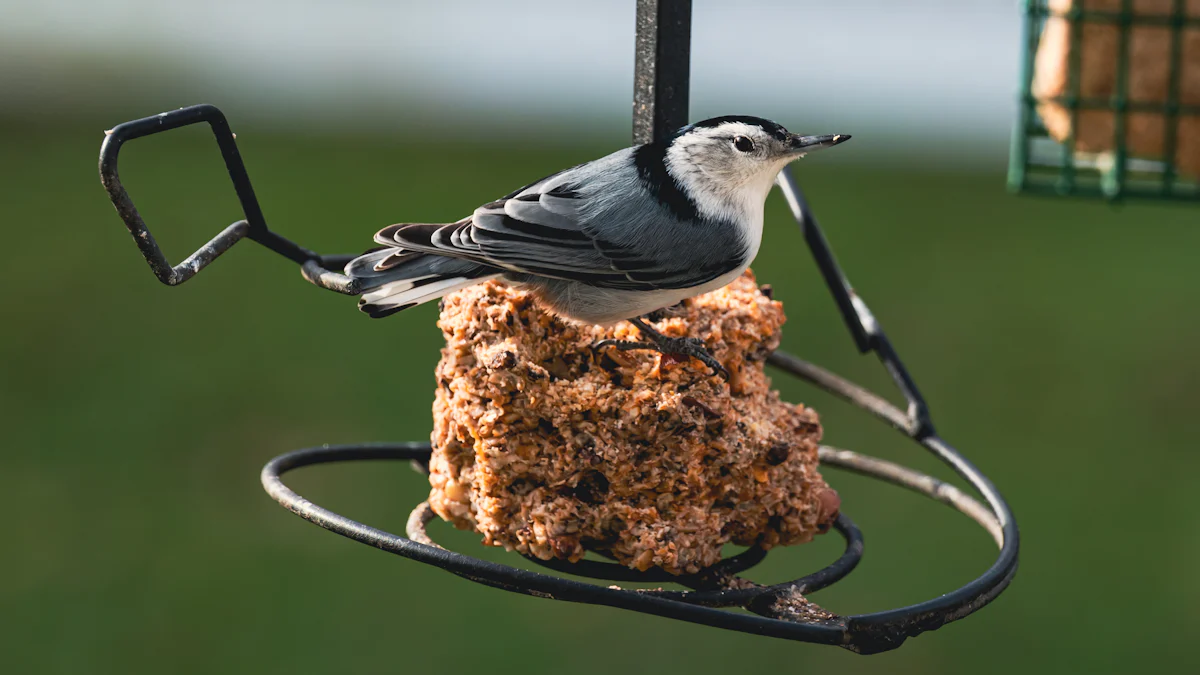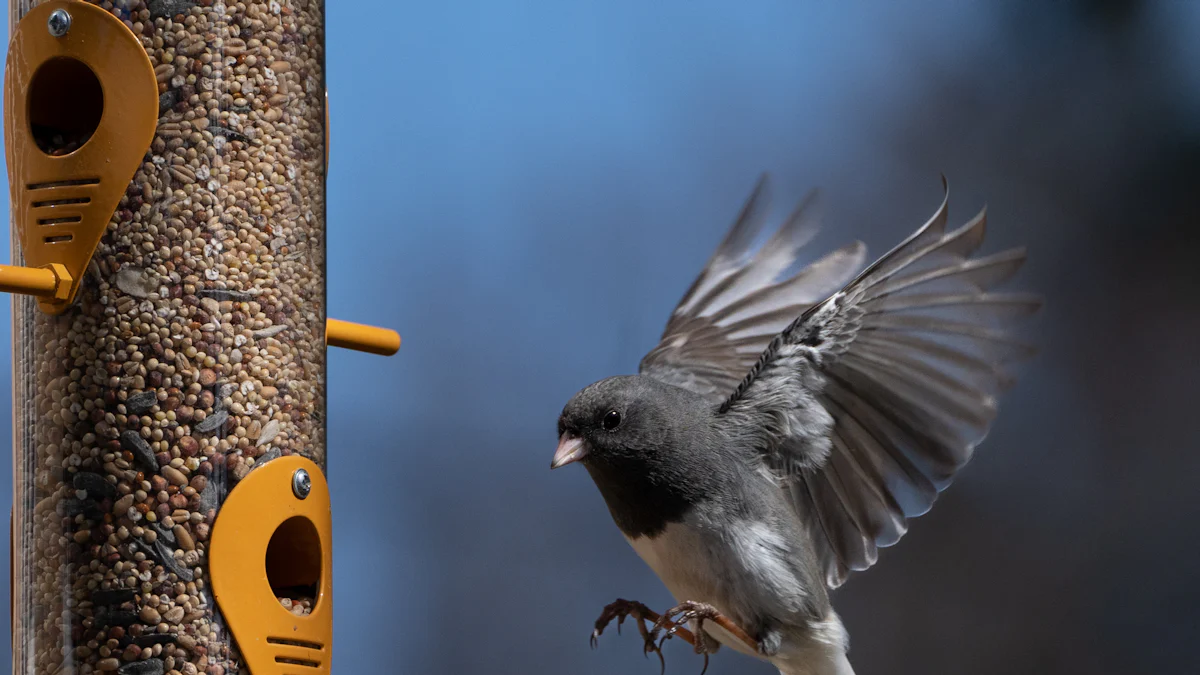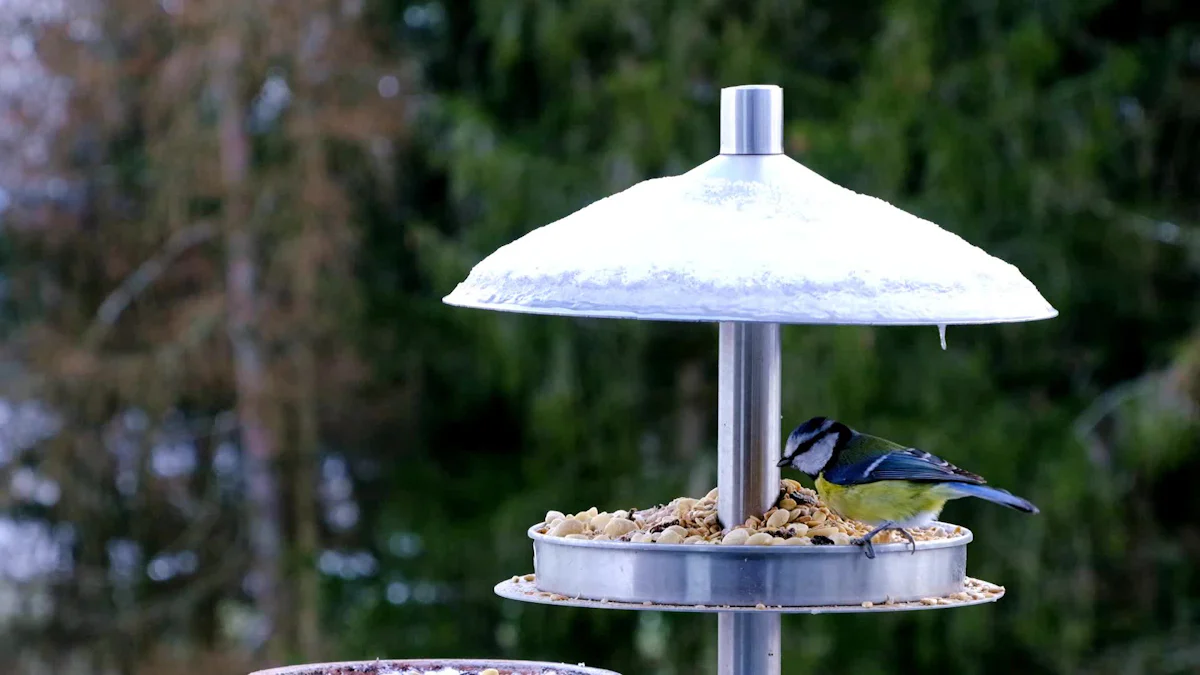
Birds can’t resist dried mealworm for bird feeding. These protein-packed treats mimic what they naturally eat in the wild, making them an ideal addition to their diet. Packed with essential nutrients like protein, fat, and vitamins, dried mealworm for bird use helps birds grow strong feathers, maintain energy, and stay healthy. You’ll also love how easy they are to store and use. Unlike live mealworms, dried ones don’t require special care, yet they still attract a variety of bird species to your backyard. It’s a win-win for you and your feathered visitors!
Key Takeaways
- Dried mealworms are a highly nutritious treat for birds, packed with protein, vitamins, and minerals essential for their health.
- Offering dried mealworms can attract a diverse range of bird species, including common backyard birds and migratory visitors.
- Using feeders to present dried mealworms ensures easy access for birds and helps maintain a clean feeding area.
- Mixing dried mealworms with other bird foods enhances their appeal and provides a balanced diet for various bird species.
- Soaking dried mealworms in water before feeding makes them softer and easier for birds, especially chicks, to consume.
- Dried mealworms are more convenient than live ones, requiring no special care and having a long shelf life, making them ideal for busy bird enthusiasts.
- Incorporating dried mealworms into your bird-feeding routine can enhance your bird-watching experience and support local bird populations.
Nutritional Benefits of Dried Mealworm For Bird

High Protein Content
Protein plays a vital role in a bird’s diet. Dried mealworms stand out as an excellent source of high-quality protein. This protein helps birds grow strong feathers, repair tissues, and maintain their energy levels. Birds, especially during breeding or molting seasons, need extra protein to support their physical demands. According to studies, the amino acid profile in dried mealworms closely matches what birds require for optimal health. By offering dried mealworms, you provide your feathered friends with the fuel they need to thrive.
Rich in Vitamins and Minerals
Dried mealworms are more than just protein-packed snacks. They also contain essential vitamins and minerals that contribute to a bird’s overall well-being. These include potassium, magnesium, iron, and various B vitamins. Potassium supports muscle function, while magnesium aids in energy production. Iron ensures proper oxygen transport in the blood, and B vitamins help with metabolism and energy release. Including dried mealworms in your bird-feeding routine ensures your birds get these vital nutrients in every bite.
A Natural and Balanced Food Source
Birds instinctively seek out food that mimics their natural diet. Dried mealworms offer a balanced combination of protein, fiber, and healthy fats, making them an ideal choice. Unlike processed bird foods, dried mealworms provide a natural option that aligns with what birds eat in the wild. Their low-fat content also makes them a healthier treat compared to other options. By adding dried mealworms to your feeders, you create a feeding environment that feels natural and satisfying for your feathered visitors.
Types of Birds That Love Dried Mealworm For Bird

Dried mealworms are a favorite among many bird species. Their high protein content and natural appeal make them irresistible to both common backyard birds and wild, migratory species. By adding dried mealworms to your feeders, you can attract a diverse range of feathered visitors.
Common Backyard Birds
Your backyard can become a haven for birds that thrive on dried mealworms. Birds like bluebirds, robins, and woodpeckers are particularly fond of this treat. Bluebirds, known for their vibrant plumage, often flock to feeders stocked with dried mealworms. Robins, with their love for protein-rich foods, eagerly snack on them, especially during breeding seasons. Woodpeckers, drawn to the nutritional value, also enjoy dried mealworms as part of their diet.
Other frequent visitors include chickadees, wrens, and sparrows. These birds rely on protein to maintain their energy levels, especially during colder months when natural food sources become scarce. By offering dried mealworms, you provide these birds with a reliable and nutritious food option.
Wild and Migratory Birds
Dried mealworms don’t just attract backyard birds; they also appeal to wild and migratory species. During migration, birds like warblers and orioles need extra energy to fuel their long journeys. The protein and nutrients in dried mealworms help them stay strong and healthy. You might even spot rarer species stopping by your feeders as they travel through your area.
In addition, insect-loving birds such as swallows and flycatchers often seek out dried mealworms. These birds naturally hunt for insects in the wild, so dried mealworms serve as an excellent substitute. By including them in your feeding routine, you support these birds during times when insects are less abundant.
“Dried mealworms are known to attract a wide variety of bird species to feeding stations. This diversity can enhance bird-watching experiences and support local bird populations, especially during periods of food scarcity.”
Whether you’re a seasoned bird enthusiast or just starting out, dried mealworms can transform your yard into a lively bird sanctuary. Watching these birds enjoy their protein-packed treat is a rewarding experience for any bird lover.
How to Use Dried Mealworm For Bird Effectively
Dried mealworms are a versatile and easy-to-use treat for birds. Knowing how to offer them effectively can make your bird-feeding experience even more rewarding. Here are some practical tips to help you get started.
Offering in Feeders
Using feeders is one of the simplest ways to provide dried mealworms to birds. You can place them in a tray feeder, a platform feeder, or even a specialized mealworm feeder. Birds like bluebirds, robins, and wrens will quickly flock to these feeders once they spot the mealworms. Keep the feeders clean and place them in a safe, visible location to attract more birds. If you’re feeding during colder months, consider placing the feeder in a sunny spot to make it more inviting.
For best results, offer small amounts of dried mealworms at a time. Birds will eat them quickly, reducing waste and preventing other animals from stealing the food. Regularly refilling the feeder ensures a steady supply for your feathered visitors.
Mixing with Other Foods
Mixing dried mealworms with other bird foods can create a balanced and appealing meal. Combine them with seeds, suet, or even fresh fruits to provide a variety of nutrients. This approach works well for attracting a wider range of bird species. For example, mixing mealworms with sunflower seeds can appeal to both insect-loving birds and seed-eating birds.
You can also sprinkle dried mealworms over your existing bird food mix. This method makes it easy for birds to discover the mealworms while enjoying their usual diet. By offering a mix, you encourage birds to keep returning to your feeders for a diverse and nutritious meal.
Soaking Dried Mealworms
Soaking dried mealworms in water before offering them can make them even more beneficial for birds. This step rehydrates the mealworms, making them softer and easier to eat. It’s especially helpful during nesting seasons when adult birds need to feed their chicks moist and digestible food. To soak them, simply place the mealworms in a bowl of clean water for about 30 minutes. Drain the water and serve them in a feeder or on a platform.
Rehydrated mealworms also provide an extra source of hydration for birds, which is crucial during hot weather or dry seasons. By soaking them, you enhance their appeal and nutritional value, ensuring your feathered friends get the best possible treat.
“Soaking dried mealworms can make them more palatable and easier for birds to consume, especially during breeding seasons when chicks require soft, moist food.”
By following these tips, you can make the most of dried mealworms and create a welcoming environment for birds in your yard. Whether you’re using feeders, mixing them with other foods, or soaking them, dried mealworms are a simple yet effective way to support bird health and attract a variety of species.
Why Dried Mealworm For Bird Is Better Than Live Ones
When it comes to feeding birds, dried mealworms offer unmatched convenience and practicality. They eliminate the challenges of handling live mealworms while still providing the same nutritional benefits. Let’s explore why dried mealworms are a better choice for you and your feathered friends.
Convenience and Long Shelf Life
Dried mealworms are incredibly easy to store and maintain. Unlike live mealworms, they don’t require refrigeration or special care. You can keep them in a sealed container at room temperature without worrying about spoilage. This makes them a hassle-free option, especially if you have a busy schedule or limited storage space.
Their long shelf life is another major advantage. Live mealworms need constant attention to stay alive, but dried mealworms remain fresh for months. You can buy them in bulk and use them whenever needed, saving you time and effort. This reliability ensures that you always have a nutritious treat ready for your birds, no matter the season.
“Dried mealworms are a practical option for bird feeding due to their ease of storage and extended shelf life.”
By choosing dried mealworms, you simplify your bird-feeding routine while still offering a high-quality food source.
Ease of Use and Less Mess
Handling live mealworms can be messy and unpleasant. They wriggle, require careful handling, and often leave behind residue. Dried mealworms, on the other hand, are clean and easy to manage. You can scoop them directly into feeders without dealing with the mess or discomfort of live insects.
Dried mealworms also reduce the risk of attracting unwanted pests. Live mealworms can escape or attract ants and other insects, creating additional problems. With dried mealworms, you avoid these issues entirely. They stay where you place them, making your feeding area cleaner and more organized.
For bird enthusiasts who value simplicity, dried mealworms are the clear winner. They let you focus on enjoying the birds rather than managing the food.
“Dried mealworms are significantly more convenient to keep and handle compared to live mealworms, making them a better choice for bird feeders.”
Switching to dried mealworms means less hassle for you and more enjoyment for the birds visiting your yard.
Dried Mealworm For Bird feeding offers a simple way to support bird health while enhancing your bird-watching experience. These protein-packed treats attract a variety of species, from backyard favorites to migratory visitors. Their convenience and nutritional value make them a practical choice for any bird enthusiast. By adding dried mealworms to your feeders, you create a welcoming space for birds to thrive. Try them today and see how they transform your yard into a lively sanctuary filled with chirping and fluttering feathered friends.
FAQ
Are dried mealworms good for birds?
Absolutely! Dried mealworms are packed with nutrients that birds need to thrive. They contain about 50% protein and 25% fat, making them an excellent energy source. Protein helps birds grow strong feathers, build muscles, and maintain overall health. Fat provides the extra energy birds need during colder months or breeding seasons. By offering dried mealworms, you give your feathered friends a nutritious treat they’ll love.
How do I store dried mealworms?
Storing dried mealworms is simple. Keep them in a sealed container at room temperature, away from moisture and direct sunlight. This ensures they stay fresh for months. If you buy in bulk, consider dividing them into smaller portions to maintain their quality. Proper storage makes it easy to have a steady supply of mealworms ready for your birds.
Can I feed dried mealworms to baby birds?
Yes, but with a small adjustment. Baby birds often need softer food. Soaking dried mealworms in water for about 30 minutes rehydrates them, making them easier for chicks to eat. This also adds hydration, which is especially helpful during hot weather. Rehydrated mealworms are a great way to support baby birds’ growth and development.
What types of birds eat dried mealworms?
Many bird species enjoy dried mealworms. Common backyard birds like bluebirds, robins, wrens, and woodpeckers love them. Migratory birds such as warblers and orioles also find them irresistible. Even insect-loving birds like swallows and flycatchers will flock to your feeders when you offer dried mealworms. Adding them to your feeding routine can attract a diverse range of birds to your yard.
How much dried mealworm should I offer?
Start with small amounts, especially if you’re new to feeding dried mealworms. A handful per day is usually enough for most backyard feeders. Birds will quickly eat them, reducing waste and preventing other animals from stealing the food. You can adjust the quantity based on how many birds visit your feeders.
Should I mix dried mealworms with other bird food?
Yes, mixing dried mealworms with other foods can create a balanced meal for birds. Combine them with seeds, suet, or fruits to provide a variety of nutrients. This approach attracts a wider range of bird species. For example, mixing mealworms with sunflower seeds appeals to both insect-eating and seed-eating birds.
Are dried mealworms better than live ones?
Dried mealworms are more convenient and practical than live ones. They don’t require refrigeration or special care, and they have a long shelf life. Unlike live mealworms, dried ones are clean and easy to handle. You avoid the mess and hassle of dealing with live insects while still providing the same nutritional benefits.
Can dried mealworms attract unwanted pests?
Dried mealworms are less likely to attract pests compared to live ones. Live mealworms can escape or draw ants and other insects. Dried mealworms stay where you place them, keeping your feeding area cleaner and more organized. Proper storage also prevents pests from accessing your supply.
Why should I soak dried mealworms?
Soaking dried mealworms makes them softer and easier for birds to eat. This is especially important during nesting seasons when adult birds feed their chicks. Rehydrated mealworms also provide extra hydration, which is crucial during hot or dry weather. To soak them, place the mealworms in water for about 30 minutes, then drain and serve.
Can I use dried mealworms year-round?
Yes, dried mealworms are suitable for year-round feeding. During winter, they provide much-needed energy when natural food sources are scarce. In spring and summer, they support birds during breeding and molting seasons. Their convenience and long shelf life make them a reliable option no matter the season.


